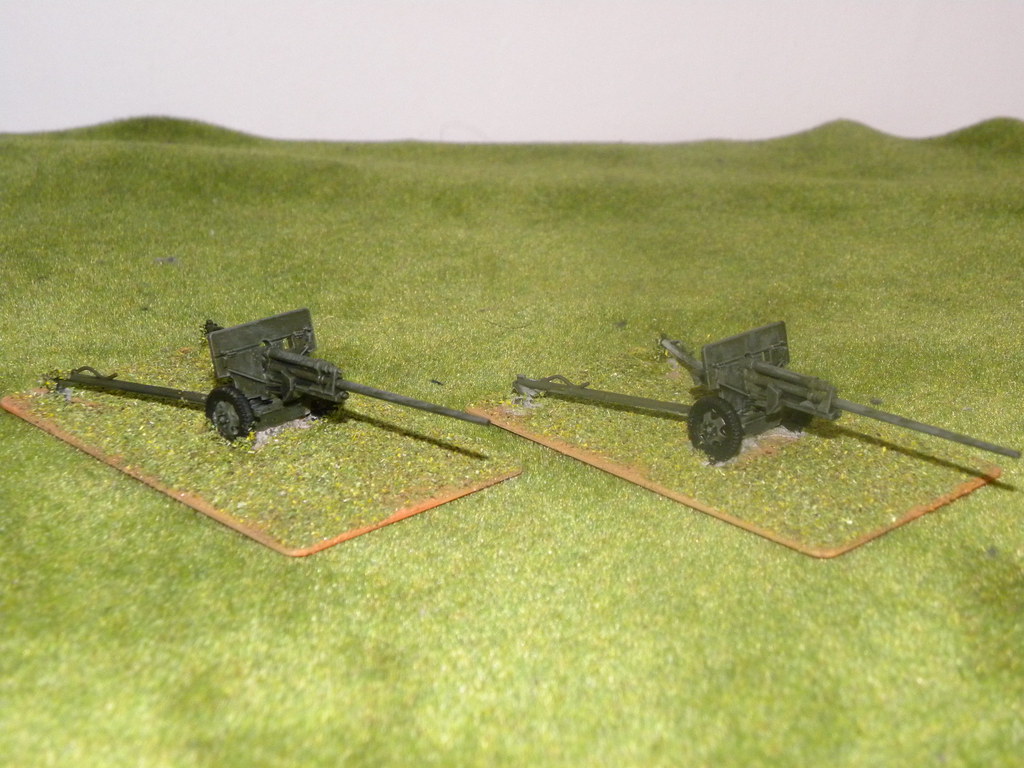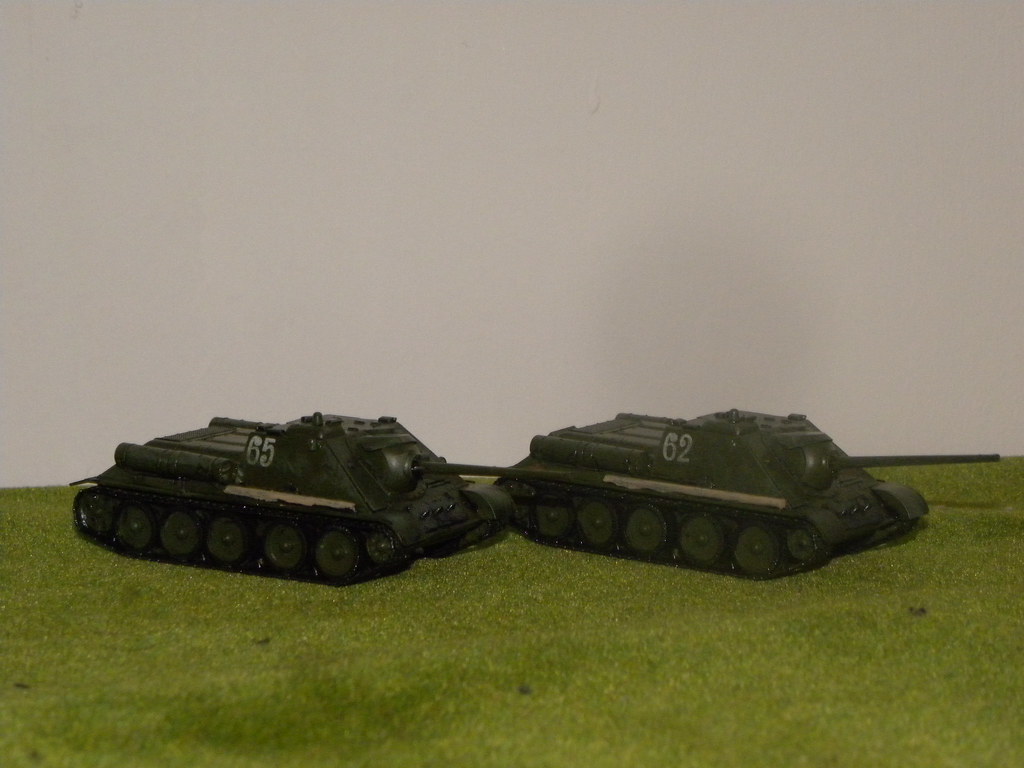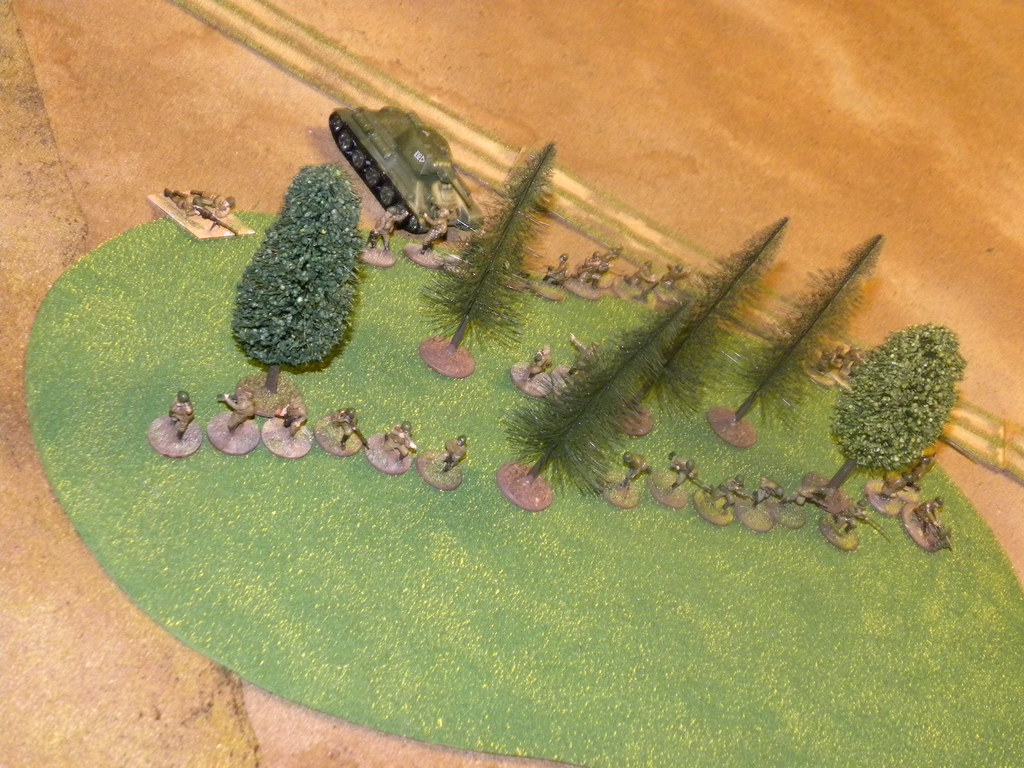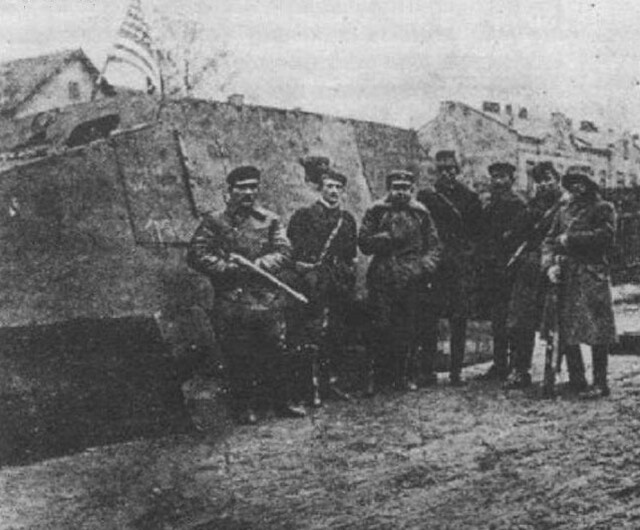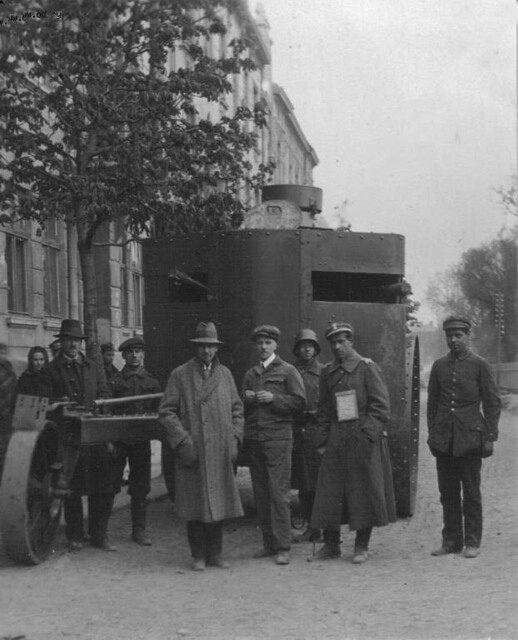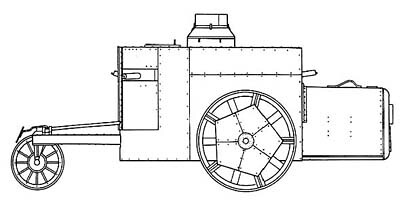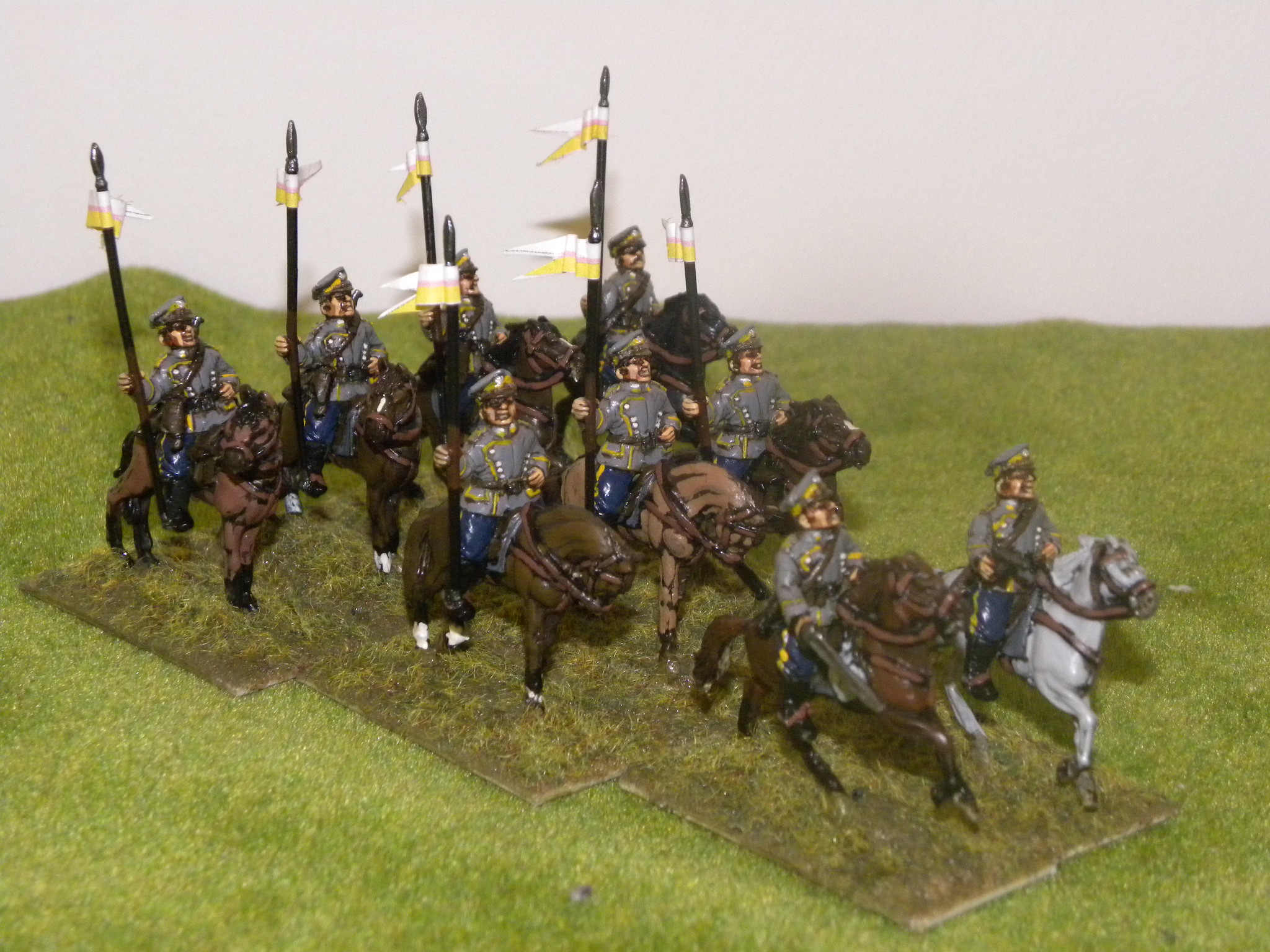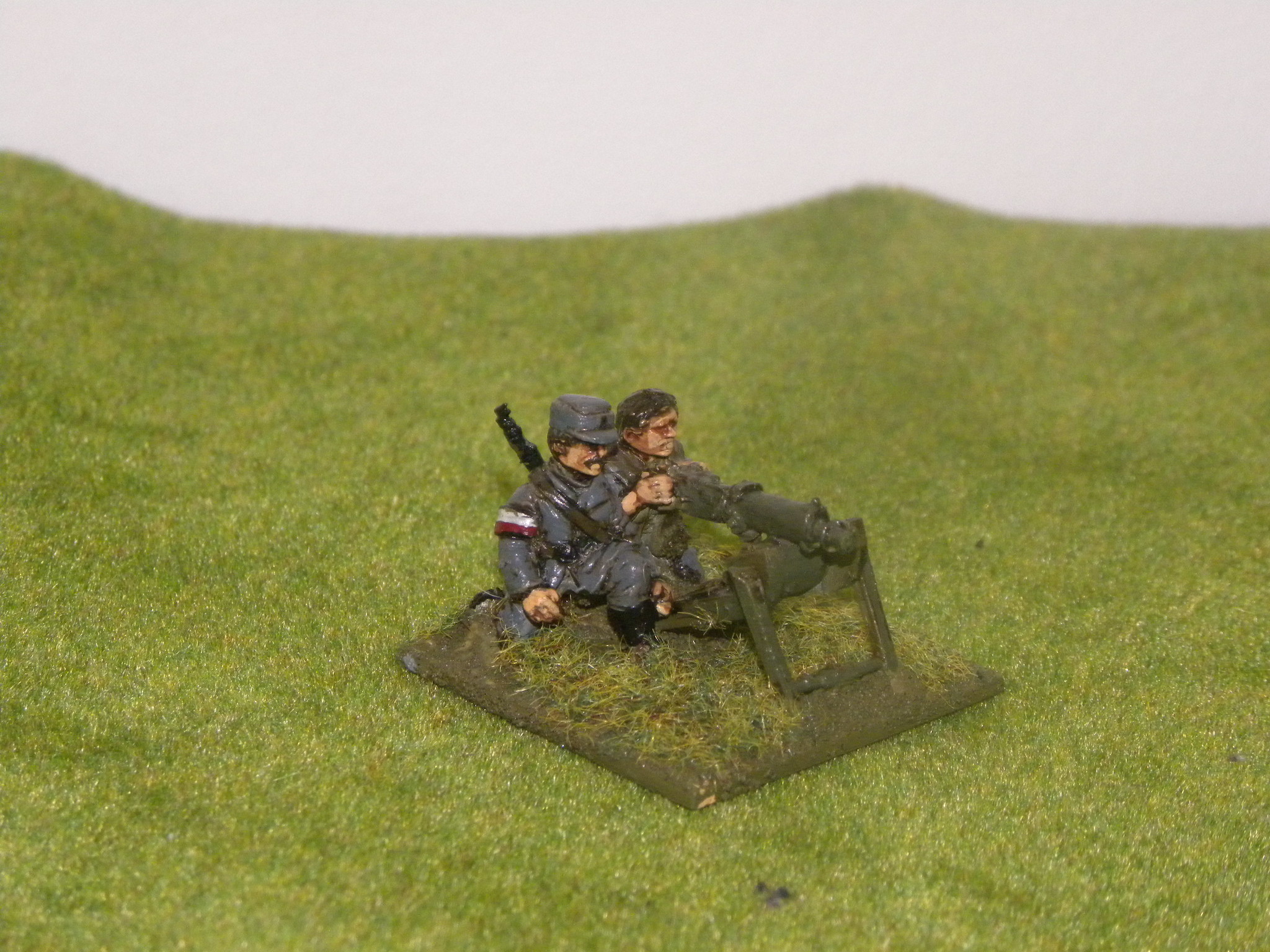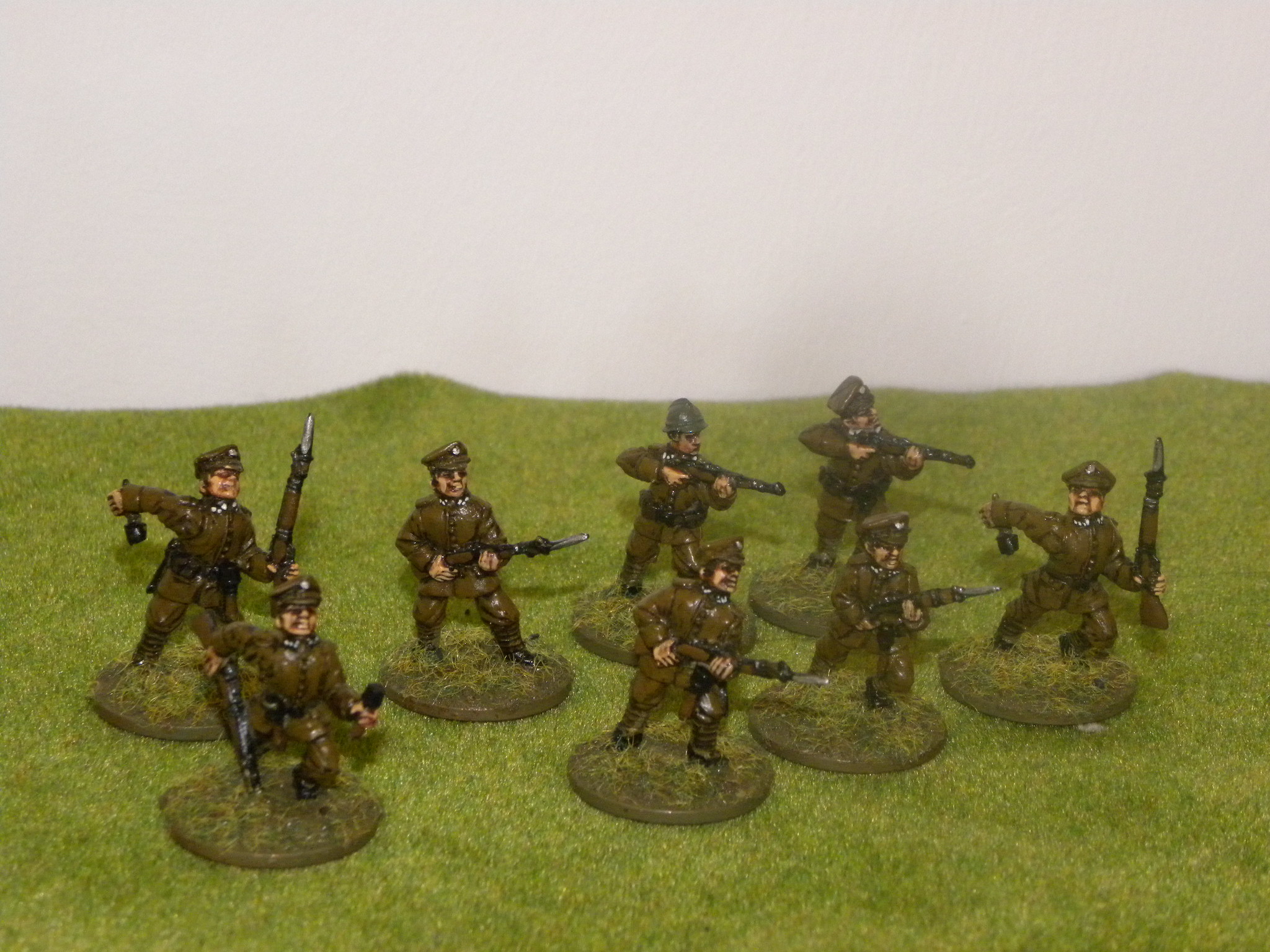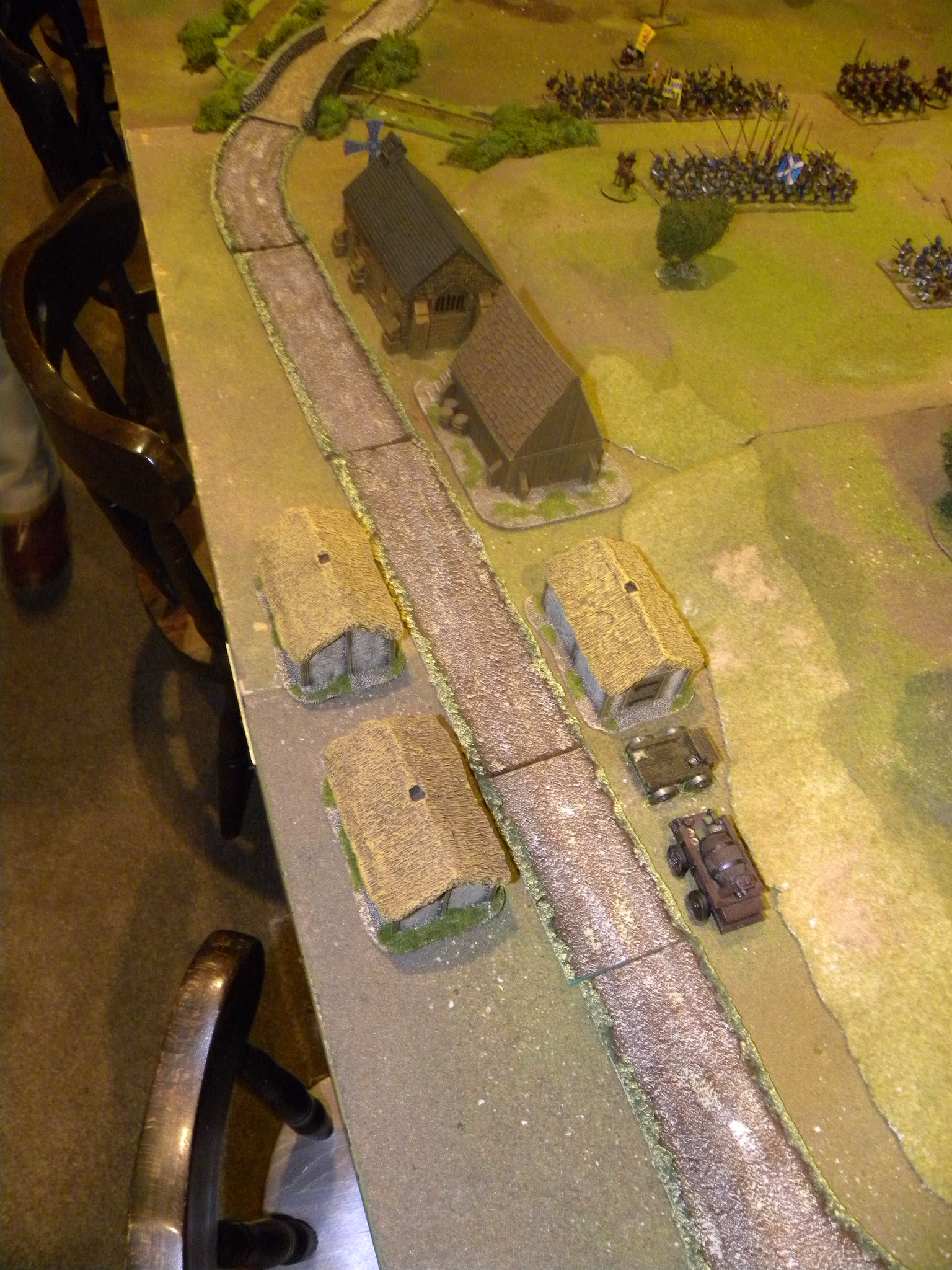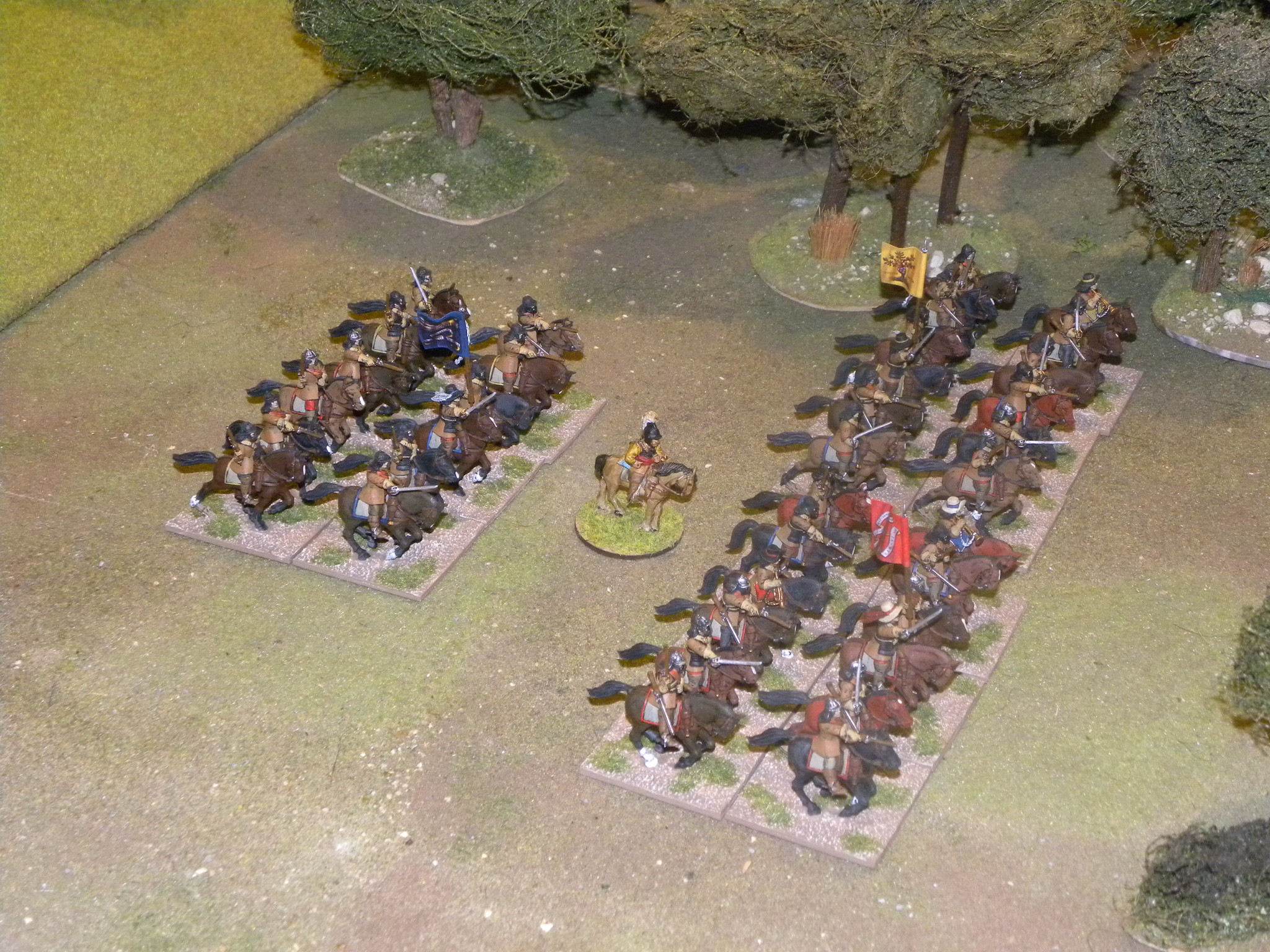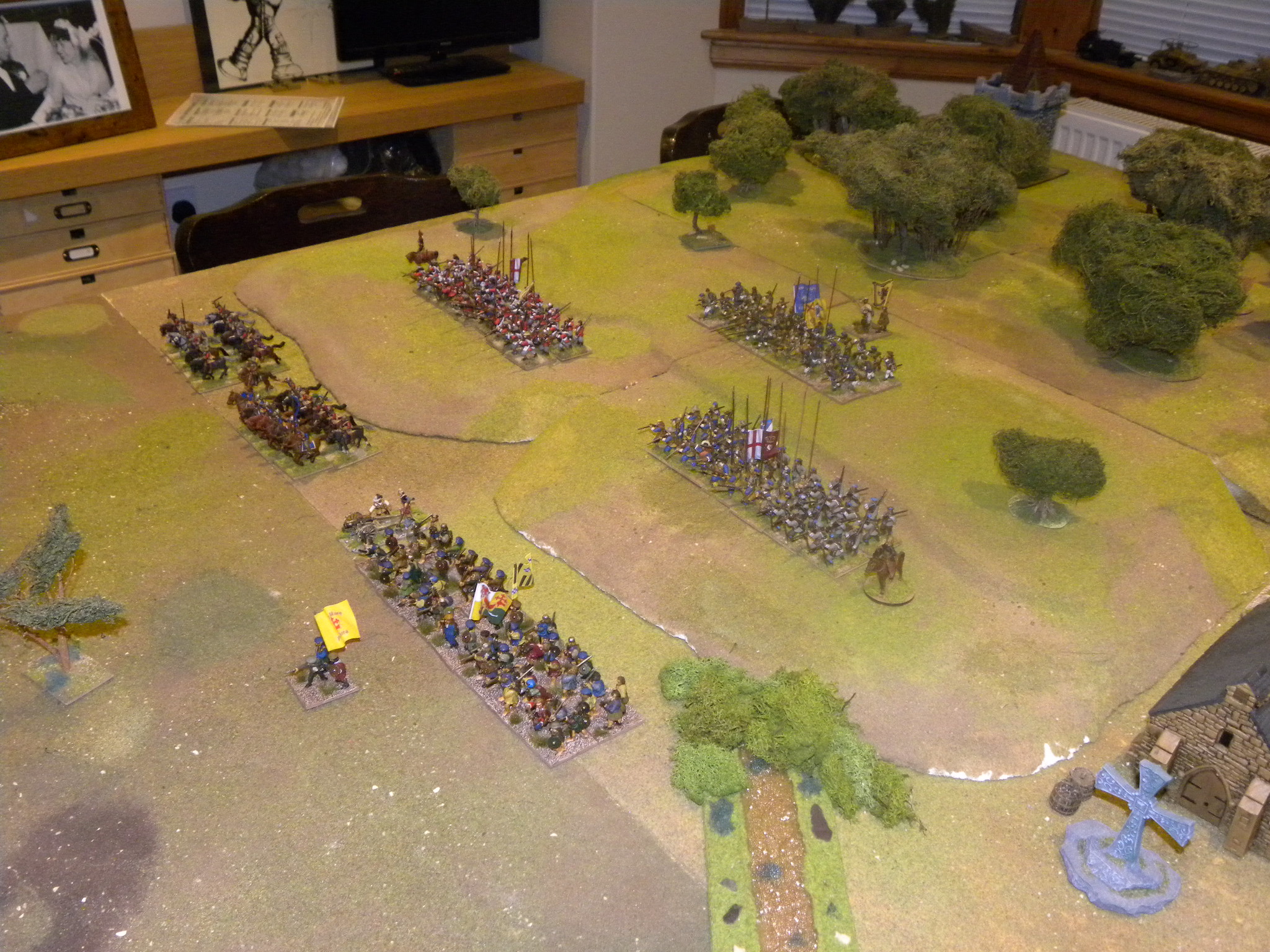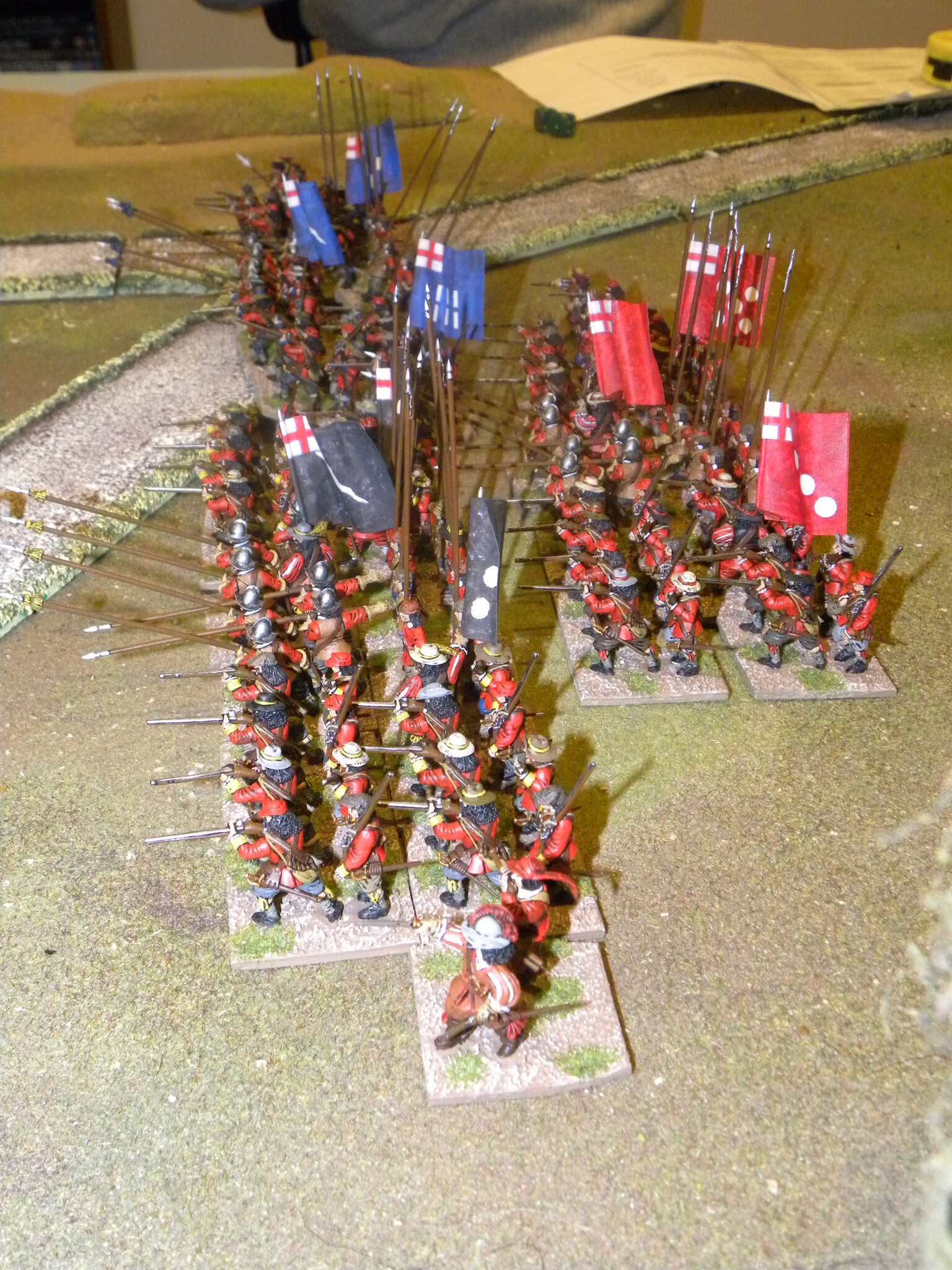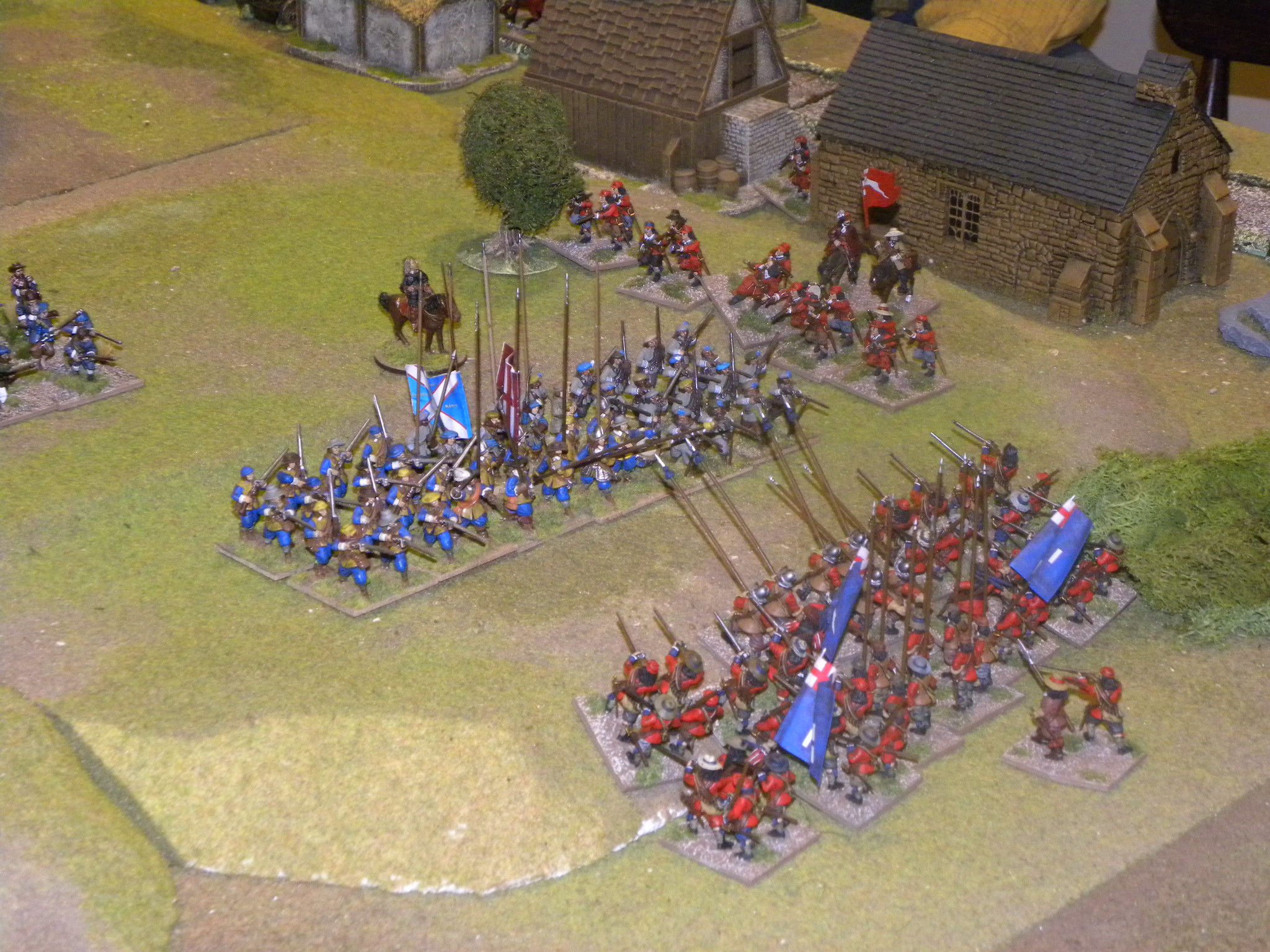W ostatni czwartek w naszym klubie rozegraliśmy jeden z moich scenariuszy do projektu Polska 1944. Jak być może niektórzy z Was zauważyli, że na specjalnej stronie stworzonej przeze mnie pojawiła się lista. Tak! Większość z tych scenariuszy jest już prawie skończona i niedługo powinny zostać opublikowane. Scenariusz, który zagraliśmy jest umiejscowiony podczas walk na przyczółku warecko-magnuszewskim w sierpniu 1944 roku. Do gry użyliśmy zasad Rapid Fire! z kilkoma moimi zasadami (na przykład inaczej rozwiązuje strzelanie HE, jako że nie podobają mi się te z podręcznika).
During
the first week since the Warka-Magnuszew bridgehead was created,
Soviets managed to located here four Guard Rifle Divisions: 27th,
35th, 57th and 79th. Additionally the 47th Guard Rifle Division together with
1st Polish Armoured Brigade started crossing the Vistula River.
Germans finally realised that they can not waste more time and have
to crush Soviet forces on the bridgehead, before it will be to late.
For that purpose they used the freshly arrived from Italy,“Hernan
Göring” Division. Despite fact, that the most of the division was
still in transport, Germans decided to use all available resources
and destroy all Soviet units.
Podczas pierwszego tygodnia od czasu gdy przyczółek warecko-magnuszewski został utworzony, sowietom udało się tu ulokować cztery gwardyjskie dywizje strzelców: 27., 35., 57. i 79. Dodatkowo 47. Gwardyjska Dywizja Strzelecka wraz z polską 1 Brygadą Pancerną rozpoczęła przeprawiać się przez Wisłę. Niemcy w końcu zdali sobie sprawę, że nie moga dłużej marnować czasu i muszą zniszczyć sowieckie oddziały na przyczółku, zanim będzie za późno. Do tego celu użyli świeżo przybyłej z Włoch dywizji “Hernan Göring”. Pomimo faktu, że duża część tej jednostki wciąż była w transporcie, zdecydowano się użyć wszystkich dostępnych środków by zniszczyć wszystkie oddziały sowieckie.
This
scenario showing the attack of 1st and 2nd “Hernan Göring” Regiments together with Kampfgruppe “Bayer”
on defence positions of 35th Guard Rifle Division at the line of Mariampol-Grabnowola-Michałówek.
Ten scenariusz pokazuje atak 1. i 2. pułków “Hernan Göring” wraz z Kampfgruppe “Bayer” na pozycje obronne 35. Gwardyjskiej Dywizji Strzelców na linii: Mariampol-Grabnowola-Michałówek.
2. Forces. Siły.
SOVIETS/SOWIECI
(Angus Konstam, Bartek Żynda)
Elements of 35th Guards Rifle Division:
III/100 Guard Rifle Regiment
(Mariampol)
HQ: CO+2 figures
7th Coy: 6 figures
8th Coy: 6 figures
9th Coy: 6 figures
MG Coy: 1 Maxim (3 figures crew)
Mortar Coy: 50mm Mortar (2 crew)
AT Rifle Coy: 1 ATR (2 crew)
45mm AT Gun
T-34/76
II/101 Guard Rifle Regiment
(Michałówek)
HQ: CO+2 figures
4th Coy: 6 figures
5th Coy: 6 figures
6th Coy: 6 figures
MG Coy: 1 Maxim (3 figures crew)
Mortar Coy: 50mm Mortar (2 crew)
AT Rifle Coy: 1 ATR (2 crew)
45mm AT Gun
T-34/76
III/102 Guard Rifle Regiment
(Hill 132.1)
HQ: CO+2 figures
7th Coy: 6 figures
8th Coy: 6 figures
9th Coy: 6 figures
MG Coy: 1 Maxim (3 figures crew)
Mortar Coy: 82mm Mortar (3 crew), 50mm
Mortar (2 crew)
AT Rifle Coy: 1 ATR (2 crew)
45mm AT Gun
REINFORCEMENTS:
(Turn 7th) North edge of the
table.
40th Heavy Tank Regiment
1st Coy: IS-2
2nd Coy: 2 x SU76M
283rd Mortar Regiment
Spotter. Jeep
2 x 82mm Mortar (3 crew each) with
truck
118th Light Artillery Regiment
Spotter. Jeep
2 x 76.2 mm ZIS-3 (3 crew each). 2
light trucks
II/100 Guard Rifle Regiment
(enter the table on the east edge of
the table)
HQ: CO+2 figures
4th Coy: 6 figures. Panzerfaust.
5th Coy: 6 figures. Panzerfaust.
6th Coy: 6 figures. Panzerfaust.
MG Coy: 1 Maxim (3 figures crew)
GERMANS/NIEMCY
(Paul O'Sullivan, Campbell Hardie, Alan Hume, Michael Schneider)
Fallschirm-Panzer-Division
“Hernann Göring:
RHQ:
3 figures in staff car
Fallschirm-Panzergrenadier-Regiment
1 “Hermann Göring”
Armoured
Battalion
HQ:
CO+ 4 figures (Panzerschrecke – 2 figures crew). SdKfz 251/10
1st
Coy: 6 figures. Panzerfaust. SdKfz 251/1
2nd
Coy: 6 figures. Panzerfaust. SdKfz 251/1
3rd
Coy: 6 figures. Panzerfaust. SdKfz 251/1
4th
Coy: (heavy): 2 MMG (3 crew each) SdKfz 7,
SdKfz
251/9
81
mortar (3 crew). SdKfz 250/1
Fallschirm-Panzergrenadier-Regiment
2 “Hermann Göring”
Armoured
Battalion
HQ:
CO+ 4 figures (Panzerschrecke – 2 figures crew) in SdKfz 251/1
1st
Coy: 6 figures. Panzerfaust. SdKfz 251/1
2nd
Coy: 6 figures. Panzerfaust. SdKfz 251/1
3rd
Coy: 6 figures. Panzerfaust. SdKfz 251/1
4th
Coy: (heavy): 2 MMG (3 crew each). SdKfz 7,
81
mortar (3 crew). SdKfz 250/1
Panzer
Battalion
1st
Coy: 4 x PzKpfw IV
2nd
Coy: 2 x JPanz IV
3rd
Coy: 2 x Marder III
Kampfgruppe
“Bayer”:
Motorised Battalion of 74th Grenadiers Regiment.
HQ:
CO+ 4 figures (Panzerschrecke – 2 figures crew) in SdKfz 251/1
1st
Coy: 6 figures. Panzerfaust. truck
2nd
Coy: 6 figures. Panzerfaust. truck
3rd
Coy: 6 figures. Panzerfaust. truck
4th
Coy: (heavy): 2 MMG (3 crew each). truck
2nd
Battalion of 27th Panzer Regiment
4th
Coy: 2 x PzKpfw IV
5th
Coy: 3 x StuG III
3. Objectives. Cele gry.
Soviets: Stop
German advantage and keep the hill 131.2.
Sowieci: zatrzymać natarcie niemieckie i utrzymać wzgórze 131.2
Germans: Cross
the Soviet table edge and take the 132.1 hill.
Niemcy: Przekroczyć sowiecką krawędź stołu i zająć wzgórze 132.1.
4. The game. Gra.
The Soviet defending plan was more or less similar to the historical, however I made some changes to it. We decided to defending the 143.3 hill, the same as Mariampol. I believed that the Germans will push their forces against those two objectives and forgot about the main objectives of the game: the hill 132.1 and the Soviet edge of the table.
Sowiecki plan obrony, był bardzo podobny do historycznego, jednakże dokonałem kilku zmian. Zdecydowaliśmy się bronić wzgóża 143.3 jak i Mariampola. Wierzyłem, że Niemcy rzucą swoje oddziały na te dwa punkty zapominając o głównych celach tej gry: wzgórzu 132.1 oraz sowieckiej krawędzi stołu.
From the beginning of the game Germans push their attacks on hill 143.3 (1st HG) and Mariampol (KG Bayer). Only 2nd GH moved forward, however some forces has been involved to crush Soviet defending on that hill. The hill remain in soviet hands and they even managed to pin the 1st HG and put that unit off the action.
Od początku gry Niemcy zaatakowali wzgórze 143.3 (1. HG) oraz Mariampol (KG Bayer). Jedynie 2. HG ruszyła naprzód, jednak część jej sił została rzucona przeciwko sowieckim pozycjom na tym wzgórzu. Wzgórze do końca pozostało w radzieckich rękach i udało im się tu nawet spinować cały 1. HG i wyłączyć go z akcji.
The 2nd HG continued their march and soon reach the forests near the 132.1 hill. Soviets tried to cover themselves behind the smoke, but the Germans pushed constantly forward. Finally Germans reach the Soviet positions, but then the 7th turn arrived with new Soviet units. They managed to stop Germans and push them back.
2. HG kontynuowała swój marsz naprzód i wkrótce osiągnęła las w pobliżu wzgórza 132.1. Sowieci próbowali się schowac za zasłoną dymną, jednak Niemcy wciąz napierali. W końcu udało im się dojść do sowieckich pozycji, jednak wtedy nadeszła 7 tura i przybyły nowe oddziały radzieckie. Z ich pomocą udało się odeprzeć atak niemiecki.
The closest to the victory was KG Bayer. Very quickly they realised that they wasting their time to fighting against Soviets in Mariampol and after destroying all their AT equipment moved forward. First they took Grabnowola and then reach the hill 132.1. Their forces started to clear the hill but again during the 7th turn they had been attacked from the flank by new Soviet vehicles. Also here, the Germans were stopped.
Najbliżej zwycięstwa była KG Bayer. Bardzo szybko spostrzegła, że traci czas na walce przeciwko Sowietom w Mariampolu i po zniszczeniu wszelkich ich broni ppanc. ruszyła do przodu. Wpierw zajęła Grabnowolę a następnie dotarła do wzgórza 132,1. Tu ich oddziały rozpoczęły oczyszczanie wzgórza, jednak znów przyszła 7 tura i zostali zaatakowani od flanki przez nowe radzieckie pojazdy. Również tu, Niemcy zostali zatrzymani.
5. Summary. Podsumowanie.
The game finished with Soviet victory and they did much better that in the original battle. In real Germans broke the defence on the hill 143.3 and took Grabnowola. They did not took the hill 132.1 but managed to broke behind the hill and create a gap in the Soviet defences. The KG Bayer took the Mariampol and push Soviet back north, but then Soviets counterattacked and push them back to Mariampol.
Gra zakończyła się sowieckim zwycięstwem i dokonali oni dużo więcej niż to miało miejsce w oryginalnej bitwie. Tam Niemcom udało się złamać obrone wzgórza 143.3 i zająć Grabnowolę. Nie udało im się zająć wzgórza 132.1, jednak udało im się włamać za wzgórze i utworzyć lukę w radzieckiej obronie. KG Bayer udało się wziąć Mariampol i odepchnąć Sowietów dalej na północ, jednak wtedy oni kontratakowali i Niemcy zostali z powrotem odrzuceni do Mariampola.
 |
From:
Jacek Domański: “Tank Power vol. LXVII. Studzianki 1944”,
Wydawnictwo Militaria 2008. page 34
|
6. Links. Linki.
My gallery on Flickr:
Moja galeria na Flickr:
Poland 1944 scenarios website:
Strona ze scenariuszami do Polska 1944:




